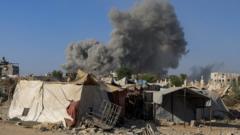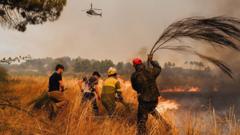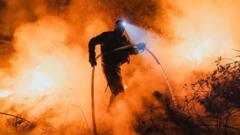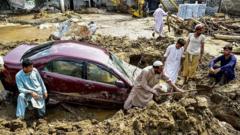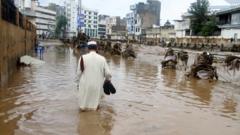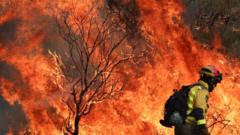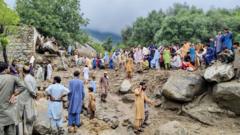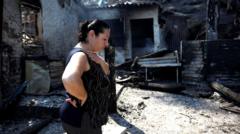A new WHO report warns that rising temperatures due to climate change pose significant health risks to workers globally, especially in construction. It calls for urgent collaborative efforts to implement adaptation strategies and highlights the implications for productivity and safety.
WHO Sounds Alarm on Workplace Heat Stress Amid Climate Change
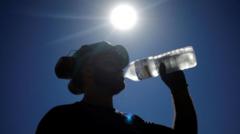
WHO Sounds Alarm on Workplace Heat Stress Amid Climate Change
As climate change intensifies, the WHO emphasizes the need for better protections for workers against extreme heat, particularly in construction and agriculture.
The World Health Organization (WHO) has raised urgent concerns about the rising risks of heat stress for workers as climate change leads to increasingly frequent and intense heatwaves. In a groundbreaking report, the WHO, in collaboration with the World Meteorological Organization, highlights the need for enhanced protections, particularly for vulnerable groups such as construction and agricultural workers, as they face heightened health risks in extreme temperatures.
This report marks the WHO's first examination of occupational heat stress since 1969, signaling a critical call to action from its director of environment, climate, and health, Rüdiger Krech. He stressed that increased body temperatures above 38C over extended periods can result in severe health complications, including dehydration, kidney failure, and strokes.
As the climate crisis escalates, adaptation strategies become essential. The report indicates that the last decade recorded the highest temperatures in history, with 2024 on track to be the hottest year ever. Instances of extreme heat over 40C (104F) are becoming commonplace in parts of Europe, while areas in Africa and the Middle East face staggering temperatures reaching up to 50C. Reports from the Mediterranean reveal that average surface temperatures in July peaked at 26.68C, a concerning record noted by Mercator.
The report also cites concerning impacts on productivity. For every one-degree increase in temperature above 20C, worker productivity declines by 2%. Furthermore, during the recent summer heatwave in Europe, workplace accidents increased by 7% when temperatures exceeded 30C, attributed to workers' compromised concentration and disrupted sleep patterns due to the unbearable heat.
In response, several European nations are beginning to implement safety measures. Italy's government recently approved an emergency decree in collaboration with labor unions to protect workers from extreme conditions. Likewise, construction activities were halted in Switzerland's Geneva and Ticino cantons during the 2023 heatwave, a decision commended by union representatives.
The report highlights the urgency of addressing heat stress not only in workplaces but also in educational settings, emphasizing that vulnerable populations, including the elderly and young children, require proactive measures. For instance, in Germany, schools can enact "Hitzefrei," allowing students to leave school when temperatures rise excessively—a practice that has become less common due to the frequency of such weather.
As temperatures in Switzerland exceeded 30C upon the school's reopening, teachers faced challenges in fulfilling educational responsibilities while maintaining students' comfort. Advocates are calling for modernized school facilities with improved ventilation and air conditioning to facilitate learning under today's climate conditions.
Krech's recommendations extend to practical considerations such as re-evaluating school uniforms in the UK for better heat adaptation. However, the imperative for adaptation will necessitate financial investment. With many governments prioritizing defense spending, the report cautions against neglecting climate resilience efforts. Krech underscored the long-term implications of inaction: "Earmarking insufficient funds for necessary adaptations could lead to significant productivity loss and detrimental health effects for workers."
In conclusion, the WHO's report serves as a critical reminder that immediate action is vital to address heat stress in the workplace and educational environments, with collaboration from all sectors essential for safeguarding health and preserving productivity in the face of climate change.


